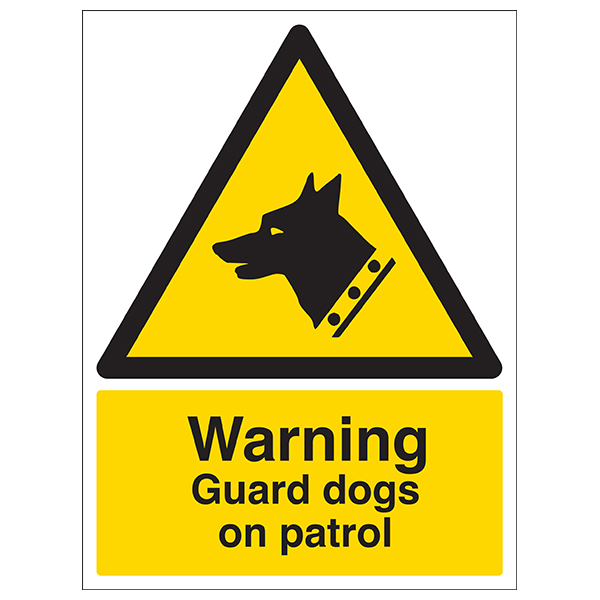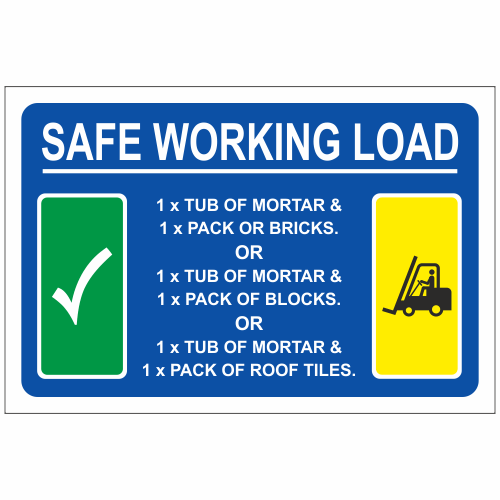Trick Considerations for Designing Effective Forklift Safety Indicators
When making efficient forklift safety indicators, it is critical to think about several fundamental variables that collectively ensure optimum exposure and clarity. High-contrast shades combined with large, clear sans-serif typefaces significantly improve readability, especially in high-traffic locations where quick understanding is important. forklift signs. Strategic positioning at eye degree and the use of long lasting materials like light weight aluminum or polycarbonate additional add to the durability and performance of these indications. Adherence to OSHA and ANSI guidelines not only systematizes safety and security messages but also reinforces compliance. To completely comprehend the details and ideal practices involved, a number of extra considerations value closer attention.
Shade and Comparison
While designing forklift security indicators, the selection of shade and contrast is critical to making sure presence and performance. Shades are not merely aesthetic elements; they serve vital useful objectives by sharing specific messages rapidly and reducing the danger of mishaps. The Occupational Security and Health And Wellness Management (OSHA) and the American National Requirement Institute (ANSI) give standards for making use of shades in safety and security indicators to standardize their significances. For example, red is normally used to signify instant risk, while yellow signifies caution.
Efficient comparison between the history and the text or icons on the indication is equally crucial (forklift signs). High contrast makes sure that the sign is legible from a distance and in differing lighting conditions.
Making use of suitable shade and contrast not just abides by governing standards but likewise plays a vital function in maintaining a risk-free workplace by making sure clear interaction of risks and guidelines.

Font Dimension and Design
When developing forklift safety indicators, the choice of font dimension and style is crucial for ensuring that the messages are legible and quickly recognized. The main objective is to boost readability, especially in environments where fast info processing is crucial. The typeface dimension need to be huge sufficient to be reviewed from a distance, suiting differing sight problems and making sure that workers can comprehend the sign without unnecessary pressure.
A sans-serif typeface is normally advised for security indications due to its tidy and uncomplicated look, which improves readability. Fonts such as Arial, Helvetica, or Verdana are often liked as they lack the complex information that can cover important info. Consistency in font design throughout all safety and security signs help in developing an uniform and expert appearance, which better strengthens the significance of the messages being conveyed.
Additionally, focus can be accomplished with strategic use of bolding and capitalization. By thoroughly choosing suitable font style sizes and designs, forklift security signs can properly connect important security info to all workers.
Placement and Visibility
Making certain optimal placement and visibility of forklift safety indicators is extremely important in industrial setups. Correct sign placement can substantially lower the risk of accidents and improve total office safety. Signs ought to be positioned at eye level to guarantee they are quickly recognizable by drivers and pedestrians. This typically means placing them between 4 and 6 feet from the ground, depending upon the typical height of the workforce.

Indicators need to be well-lit or made from reflective materials in dimly lit areas to ensure they are noticeable at all times. By diligently considering these aspects, one can guarantee that forklift security indications are both reliable and visible, thereby cultivating a much safer working environment.
Product and Toughness
Selecting the appropriate materials for forklift safety signs is crucial to ensuring their durability and efficiency in industrial atmospheres. Provided the severe conditions often come across in storage facilities and making facilities, the materials chosen must withstand a selection of stress factors, consisting of temperature changes, moisture, chemical exposure, and physical impacts. Sturdy substratums such as light weight aluminum, high-density polyethylene (HDPE), and polycarbonate are prominent choices due to their resistance to these elements.
Light weight aluminum is renowned for its toughness and rust resistance, making it an outstanding choice for both interior and exterior applications. HDPE, on the other hand, provides remarkable impact resistance and can sustain extended direct exposure to severe chemicals without degrading. Polycarbonate, recognized for its high influence stamina and clarity, is usually made use of where exposure and resilience are paramount.
Just as crucial is the kind of printing made use of on the signs. UV-resistant inks and safety coatings can substantially enhance the life expectancy of the signs by avoiding fading and wear created by prolonged exposure to sunshine and various other environmental aspects. Laminated or screen-printed surfaces offer added layers of protection, guaranteeing that the vital safety and security information stays understandable over time.
Investing in premium products and durable production processes not only prolongs the life of forklift safety and security indicators but also strengthens a society of safety within the workplace.
Compliance With Laws
Sticking to governing standards is critical in the style and implementation of forklift safety and security indicators. Conformity ensures that the signs are not only efficient in communicating important safety and security details yet also meet legal obligations, thus reducing prospective obligations. Different organizations, such as the Occupational Security and Health And Wellness Administration (OSHA) in the United States, offer clear standards on the specs of security indications, including color pattern, message size, and the addition of globally identified icons.
To follow these guidelines, it is important to carry out a complete evaluation of appropriate standards. For example, OSHA mandates that safety indicators have to be noticeable from Learn More a distance and include specific shades: red for risk, yellow for caution, and green for safety and security guidelines. In addition, adhering to the American National Standards Institute (ANSI) Z535 collection can additionally enhance the performance of the indications by standardizing the layout aspects.
Moreover, normal audits and updates of safety signs must be carried out to ensure continuous compliance with any kind of changes in laws. Engaging with licensed safety and security specialists throughout the layout phase can also be valuable in guaranteeing that all governing demands are fulfilled, and that the indicators serve their desired purpose properly.
Conclusion
Creating effective forklift security signs needs mindful attention to shade comparison, font style dimension, and style to make certain optimum exposure and readability. Strategic placement at eye level in high-traffic locations boosts awareness, while the use of sturdy materials makes sure long life in various environmental problems. Adherence to continue reading this OSHA and ANSI standards standardizes safety messages, and including reflective products enhances exposure in low-light scenarios. These considerations Web Site collectively add to a more secure working environment.